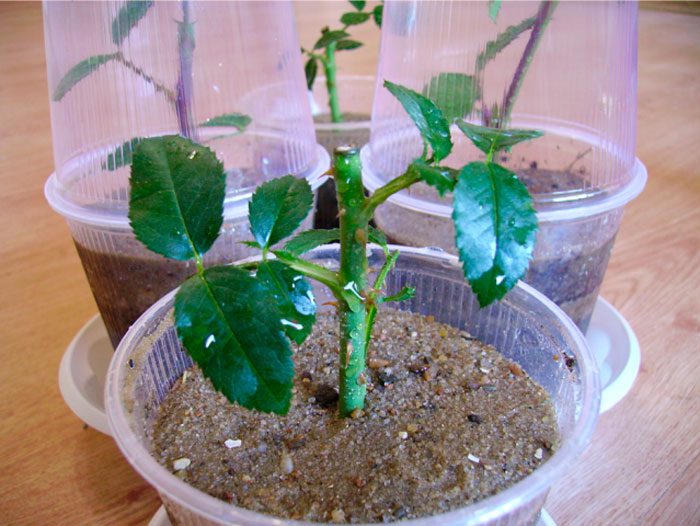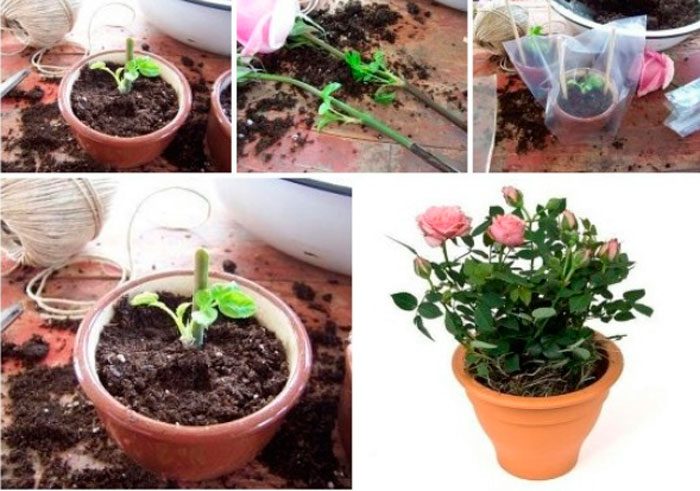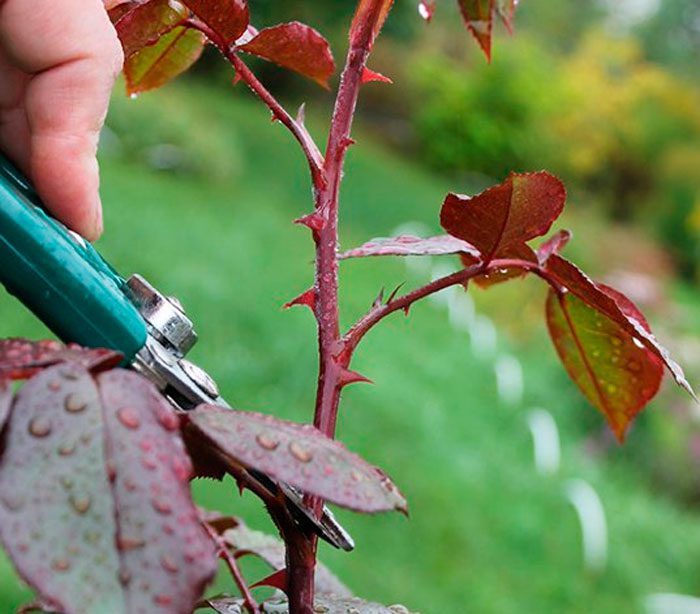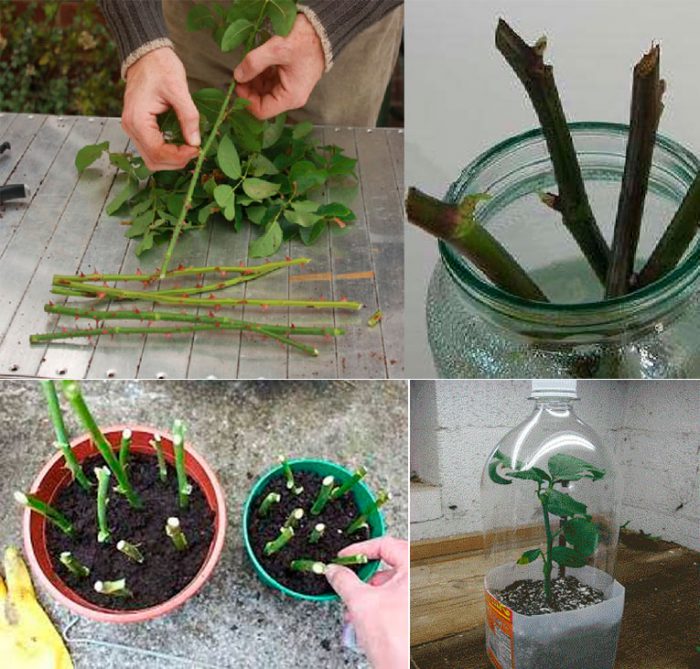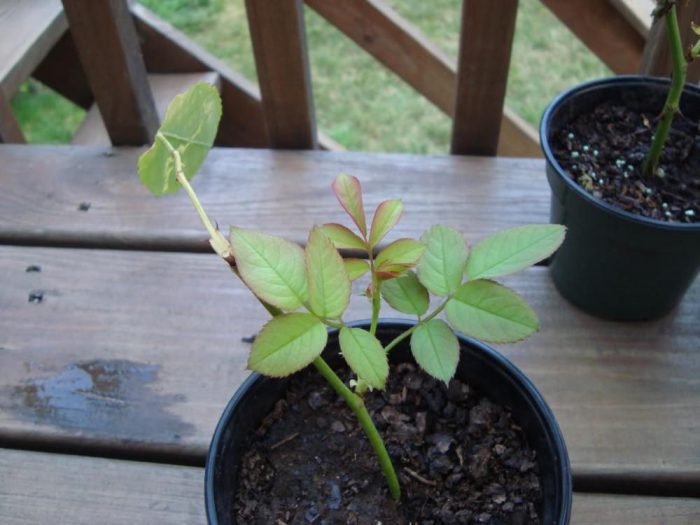Rose is without a doubt one of the most popular ornamental flowering plants that almost any grower would like to grow at home. Today there are a huge number of different varieties, each of which is charming in its own way. Each type of rose has its own characteristic features. Many growers from buying a rose seedling are stopped by its rather high cost, as well as uncertainty about the quality of the planting material. However, there is still a way out of such a difficult situation. At home, it is quite possible to grow a rose from a cuttings taken from a garden plant in the fall. But in order for the rose to take root, as well as to grow and develop normally, you should know several important nuances.
Content
Basic rules for growing a rose from a cutting
In order to get a beautiful and strong plant without much hassle, such a propagation method as cuttings is excellent. Such a plant will not have root growth, which will greatly facilitate caring for it. And this method of reproduction will save the grower from many problems associated with the acquisition of planting material. And that's all, because plants purchased in the store can be propagated in this way.
The first thing to do is to prepare the cuttings themselves. For the cutting, you should choose a shoot that has at least 5 leaves, in this case it will give roots much better than those cut stems that have only 2 leaves. Also, these cuttings are grafted several times better. The cut must be done very carefully, and it must be oblique. Cut off the shoot a few centimeters from the buds. After that, it is necessary to carefully cut off all the leaf plates located below from the handle. Shoots of medium thickness are excellent for cuttings, and it is not recommended to use thick or thin stems for such purposes.
Experienced growers do not recommend propagating imported roses by cuttings, the fact is that such cuttings rarely root normally. A plant that grows in the area where you yourself live is best suited for this procedure. It is also very important to consider that the cuttings must be fresh.
The whole process of grafting is divided into 4 stages:
- Fill a small container with a weak potassium permanganate solution. Then a cut cutting should be placed in it and left there all day.
- Then the cutting is planted at a relatively shallow depth.So, 1 kidney should be in the soil, and the second one should rise above its surface.
- In order for rooting to be successful, you can make a mini-greenhouse from a film, and a cap is perfect for this purpose.
- The seedling should be given the necessary care. It must be watered and ventilated on time. After rooting, it is transplanted into a permanent pot.
In the event that you do everything right, then after some time a strong root system will grow from the cutting, and in just 2 years you will be able to fully enjoy the beauty of the rose that you yourself have grown at home. In order for a young plant to grow and develop well, as well as be strong and healthy, it is imperative to remove all buds that form in the first 2 years of life. However, one should not feel sorry for them. The fact is that the plant spends too much effort on the formation of buds, as well as on their growth and development.
How to properly care
It is recommended to propagate a rose by cuttings in the second half of the autumn period. In order for the stalk not to die and take root quickly enough, the most comfortable conditions should be created for it.
Selection and preparation of soil mixture
To grow a rose from a cuttings at home, you need to use suitable soil. So, for normal growth and development, such a plant needs a soil mixture saturated with nutrients. This soil can be purchased at any specialty store. However, if you wish, you can prepare this soil mixture with your own hands. So, for this you need to combine clay, sand, and humus. Some growers with considerable experience behind them advise adding a small amount of chicken droppings to such a mixture, but this can be omitted. A rather loose substrate is also a prerequisite for the normal rooting of a rose cut. In this case, young roots can easily grow deeper into the container.
Basic rules for watering
If you are going to grow such a rose indoors, you should definitely remember that it reacts extremely negatively to both extreme cold and excessive heat. In this regard, experienced flower growers advise in winter to place such a plant in close proximity to heating devices or batteries. In summer, it is better to transfer this plant to a place where the relative coolness will remain during the day. So, a balcony is perfect for this. It should also be remembered that all types of roses respond positively to high humidity. In this regard, systematic moistening of the plant from a sprayer is recommended.
Required lighting level
This plant reacts extremely negatively to exposure to direct sunlight. The fact is that they can damage the foliage, leaving burns on its surface. To place such a flower, it is recommended to choose a sufficiently dark place. If there is no such place, then the plant must be shaded from the direct rays of the sun. It should be remembered that in no case should you place a rose in the back of the room. The fact is that poor lighting will negatively affect not only the growth and development of the flower, but also its decorative effect.
After the planted stalk gives roots, gets stronger and starts to grow, you can begin to accustom it to fresh air. But it should be borne in mind that this should be done gradually. So, for this you need to open the package daily for some time. Such a plant can be transplanted into open ground in the warm season. However, this procedure must be approached with full responsibility. It should be remembered that on the first day after the transplant, such a rose must be well moistened.Please note that the soil after watering should not be wet, since in this case rot can develop on the roots rather quickly and the flower will die. We must try to keep the substrate constantly slightly moistened; for this, the flower needs to be watered quite often, but at the same time not use a very large volume of water. Do not forget to systematically feed the rose, both mineral and organic fertilizers are excellent for this.

